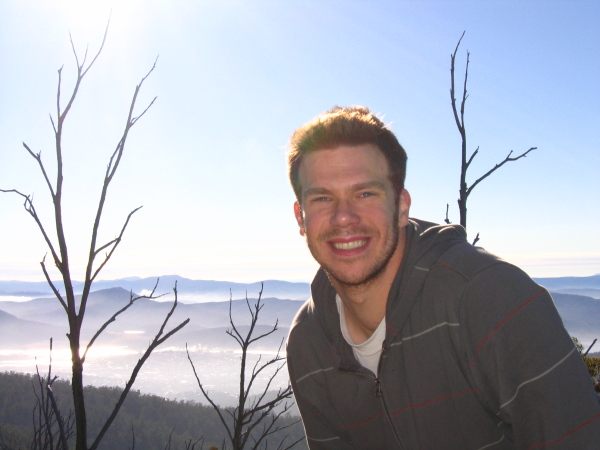
VIDA Postdoctoral Fellow 2012 - Present
Department of Physiscs and Astronomy
Vanderbilt University
Ph.D., The Ohio State University 2012; Advisor: David Weinberg
M.S., The Ohio State University 2008
Ohio State Astronomy
B.S., California Institute of Technology 2003
Caltech Physics
Galaxy Formation Theory
Specifically theory that can be tested by upcoming stellar surveys of the Milky Way. I work with N-body simulations and chemical evolution codes to ascertain the Galaxy's past from current observations. I am currently devising statistical characterizations of stellar phase-space in mock observations of simulations designed to match upcoming surveys.
Radial Mixing in Galactic Disks: The Effects of Disk Structure and Satellite Bombardment Advisor: David Weinberg and Stelios Kazantzidis
We use a suite of numerical simulations to investigate the mechanisms and effects of radial migration of stars in disk galaxies like the Milky Way (MW). We are the first to investigate, using a full N-body analysis with a live potential, how gravitational perturbations from satellite galaxy accretion events affect the radial migration of stars and find that satellite-induced migration patterns and dynamics differ from those found in isolated disks. In the isolated disk models, the probability of migration traces the disk's radial mass profile, but in perturbed disks migration occurs preferentially at large radii, where the disk is more weakly bound. The orbital dynamics of migrating particles are also different in isolated and perturbed disks: satellite perturbations drive particles to lower angular momentum for a given change in radius. Thus, satellite perturbations appear to be a distinct mechanism for inducing radial migration, which can operate in concert with migration induced by bars and spiral structure. We identify signatures that might be used to test models and distinguish radial migration mechanisms in chemo-dynamical surveys of the MW disk. You can access the paper HERE.
A Bound on the Light Emitted during the Thermally Pulsing Asymptotic Giant Branch Phase Advisor: Marc Pinsonneault
We used a simple fuel consumption argument to constrain the integrated luminosity of TP-AGB stars across a range of progenitor mass. Stellar interior models robustly predict the mass of the core at the onset of the TP-AGB phase and our updated white-dwarf initial-final mass relation (IFMR) predicts the final remnant mass. The required nuclear burning to grow the core from the TP-AGB onset mass to the remnant mass represents a lower bound on the energy output of the TP-AGB phase while constraints from chemical evolution provide an upper bound. We find that 2-6 solar mass stars experience significant core mass growth during the TP-AGB phase, peaking at ~20% fractional contribution to the white dwarf mass for 2-3 solar mass stars and apply these constraints to two contemporary stellar evolution codes. You can access the paper HERE.
Using Ultra Long Period Cepheids to Extend the Cosmic Distance Ladder to 100 Mpc and Beyond Advisor: Kris Stanek
We examine the properties of 17 long period (80-180 days) and very luminous (median absolute magnitude of M_I= -7.93 and M_V= -7.03) Cepheids to see if they can serve as an useful distance indicator. We find that these Ultra Long Period (ULP) Cepheids have a relatively shallow Period-Luminosity (PL) relation, so in fact they are more "standard candle"-like than classical Cepheids. ULP Cepheids main advantage over classical Cepheids is that they are more luminous, and as such show great potential as stellar distance indicators to galaxies up to 100 Mpc and beyond. You can access the paper HERE. An article discussing this paper has appeared in the "News and Views" section of the June 2009 issue of Nature. Click here for the PDF version. Other media links: OSU Press Release, Science Magazine Mini Article, MSNBC's Cosmic Log
The Lifetime of FRIIs in Groups and Clusters: Implications for Radio-Mode Feedback Advisor: Paul Martini
We constrain the lifetime of FRII radio jets by comparing thier projected length distribution with models for jet propagation. We estimate the average FRII lifetime is 1.5x10^7 years and the duty cycle is ~8x10^8 years. You can access the paper HERE.